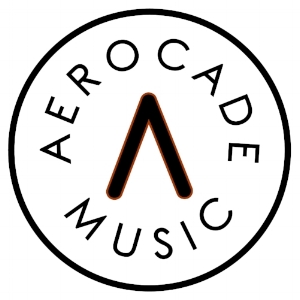This article originally appeared in Issue 49:3 (Jan/Feb 2026) of Fanfare Magazine.
Flutist Meerenai Shim’s new album is a dazzling, cutting-edge recital which is riveting from first to last. Actually “flutist” doesn’t convey the half of what Shim does here. She plays piccolo, flute, alto flute, bass flute, contrabass flute, piano, drums, cello, Otamatone (we’ll get to that), and provides vocals. She’s curated the recital to perfection and acted as producer for the album. Phew. All that effort pays off handsomely, though.
Shim starts with a contemporary classic, Steve Reich’s Vermont Counterpoint. This is a fast, hectic whirlwind of a piece. Its compositional technique is predicated on the construction of canons between short repeating melodic patterns, substituting notes for rests, and creating new melodies from their combination. It’s scored for three alto flutes, three flutes, three piccolos, and one solo part all pre-recorded, plus a live solo part. Shim, multi-tracked, plays all the instruments with exhilarating virtuosity and one is instantly aware of the care that has been taken with the canvas of sound.
Janice Misurell-Mitchell’s O Sapientia, which follows, uses the antiphon of that name by the medieval composer Hildegard von Bingen as a starting point for what feels like a journey through an evolving soundscape, from something truly ancient at the start to a much more jagged and fragmented present. Shim’s flutes at the start evoke organ chords, and the talented countertenor Carl Alexander’s vocals are reminiscent of plainchant. Multi-tracking is cleverly used as the piece evolves so that the range of sounds becomes more complex and mysterious, until we seem far from its origins at the conclusion. It’s a transportive and immersive experience.
Three pieces by Meghann Wilhoite come next. The composer explains that they originated as an EP for an electronic music project. When Shim made contact about Wilhoite writing a new piece for her, Wilhoite suggested that she “cover” the EP. The result is extraordinary. Shim plays cello and drums as well as flutes on As if, a thrilling and relentless exploration of the combative. She adds piano to flutes on You Don’t Belong Here, a more austere and reflective piece which closes beautifully with a flute choir. The Audacity, the final piece in the group, has its roots in rock with Shim playing a simple flute part over a distinctive beat. An Otamatone (a miniature synthesizer shaped like an eighth note) also makes a surprising but subtle appearance. I very much enjoyed this unpretentious two and a half minutes of music whose cumulative effect defies conventional analysis.
Brent Miller’s Miniatures, Book 4: Preset Etudes is a playful juxtaposition of some flute writing redolent of the technical exercise or etude and a Korg drum machine, played out over six short sections. I found it joyfully eccentric (among Shim’s duties as a performer is a reading of the Korg manual) and utterly fascinating.
The album closes with The Honorable Elizabeth A. Baker’s Whispers on the Wind. Baker says the piece, the longest on the album, “explores the liminal space where wishes of the heart are made and answers to questions, that one never speaks aloud, are softly carried on streams of air.” That liminal quality is powerfully evoked by the astounding range of sounds and textures contained in the work’s 22-minute duration. In some ways what we hear is a reminder of what has gone before on the album, excitingly developed. So multi-tracking and the spoken word feature again, together with an extended palette of electronic sounds, to which Shim adds a Glissando Headjoint for her flute to extraordinary effect. The performer uses a video score, which I would have loved to have seen. Its “Codex” gives some examples, which actually help to imagine not just the score but also its effect: “Big circles, low pitch, deep pitches in the lower range”; “Text is read into the flute breathy and hanging on sibilance”; “Chaos dots are a mixture of sounds of any choice, with separation at the atomic level they build in the electronics as a wall of sound.” You have to commit to this piece as a listener. If you do, it opens up and rewards.
The Audacity is a wonderful showcase, then, both for contemporary composition and for a very special performer. Shim has done an excellent job too as producer. The album is not “about” the technology it uses, but Shim’s vision for its potential has clearly been liberating. The result is deeply memorable. Dominic Hartley















